VR Wars: The Red Devil RX 6900 XT vs. the RTX 3090 FE – 15 Games Performance benchmarked using the Vive Pro
This review presents a fifteen-game VR performance showdown between the Red Devil RX 6900 XT and the RTX 3090 Founders Editon (FE) using the Vive Pro and FCAT VR. This is also Part 2 of BTR’s 3-part review featuring the Red Devil. We have also added Assetto Corsa Competizione and Into the Radius for this review.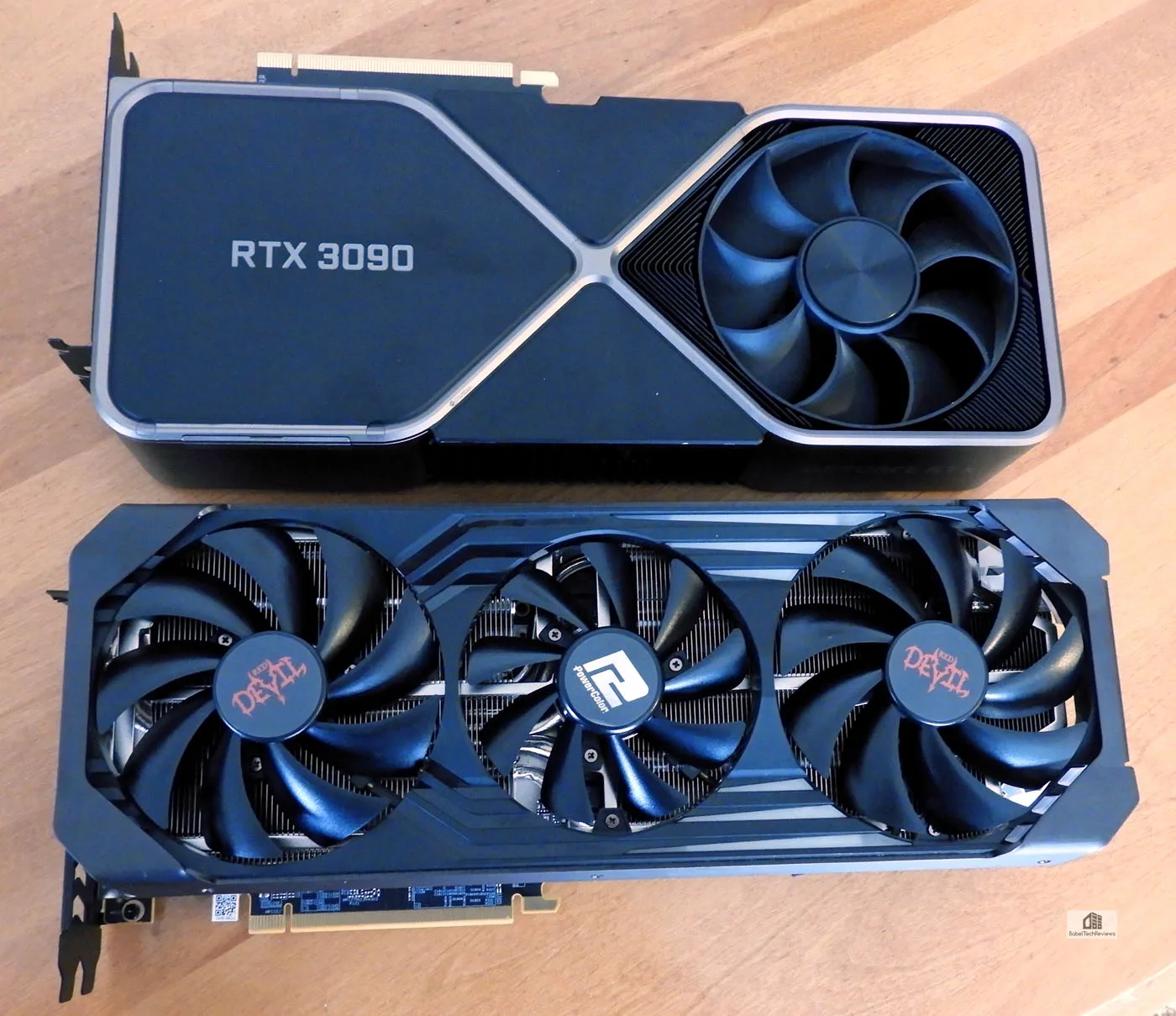
Since we posted our original review, we have benchmarked more than 20 VR games for our follow-up reviews over the past four years. We have also compared FCAT-VR with our own video benchmarks using a camera to capture images directly from our HMD’s lenses. For BTR’s VR testing methodology, please refer to this evaluation.
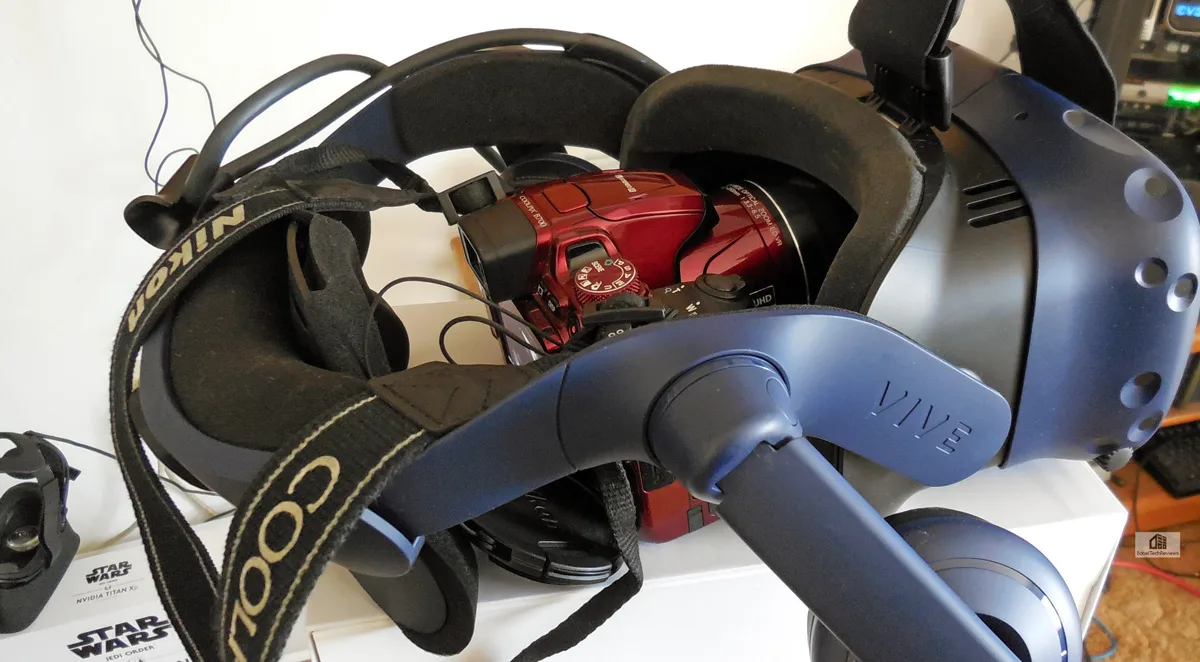
We currently benchmark fifteen VR games using the Vive Pro. BTR’s testing platform is an overclocked Intel Core i9-10900K, an EVGA Z490 FTW motherboard, and 32 GB of Vulcan Dark Z DDR4 at 3600MHz on a clean install of Windows 10 64-bit Pro Edition using NVIDIA’s GeForce Game Ready Driver, 460.89, and AMD’s Adrenalin Software 20.12.2 drivers for the Red Devil RX 6900 XT.
It is important to be aware of VR performance since poorly delivered frames can make a VR experience unpleasant. It’s also important to understand how we accurately benchmark VR games using FCAT-VR as explained here. But before we benchmark our fifteen VR games, check out our Test Configuration below.
Since we received our Red Devil RX 6900 XT, we tested 35 pancake games to validate its performance versus the NVIDIA flagship, the RTX 3090 FE. The two cards trade blows and the performance is close in multiple rasterized games, but the GeForce is the faster card as well as being more expensive. The RTX 3090 is also significantly faster in ray traced games, but this review will focus on VR performance. Up next is our test configuration which are the same for PC games as PC VR games.
Test Configuration – Hardware
- Intel Core i9-10900K (HyperThreading/Turbo boost On; All cores overclocked to 5.1GHz/5.0Ghz. Comet Lake DX11 CPU graphics)
- EVGA Z490 FTW motherboard (Intel Z490 chipset, v1.3 BIOS, PCIe 3.0/3.1/3.2 specification, CrossFire/SLI 8x+8x), supplied by EVGA
- T-FORCE DARK Z 32GB DDR4 (2x16GB, dual channel at 3600MHz), supplied by Team Group
- Vive Pro, on loan from HTC/Vive; the Wireless Adapter is not used for benchmarking
- Red Devil RX 6900 XT 16GB, stock clocks, on loan from PowerColor.
- RTX 3090 Founders Edition 24GB, stock clocks, on loan from NVIDIA
- 1TB Team Group MP33 NVMe2 PCIe SSD for C: drive
- 1.92TB San Disk enterprise class SATA III SSD (storage)
- 2TB Micron 1100 SATA III SSD (storage)
- 1TB Team Group GX2 SATA III SSD (storage)
- 500GB T-FORCE Vulcan SSD (storage), supplied by Team Group
- ANTEC HCG1000 Extreme, 1000W gold power supply unit
- BenQ EW3270U 32? 4K HDR 60Hz FreeSync monitor
- Samsung G7 Odyssey (LC27G75TQSNXZA) 27? 2560×1440/240Hz/1ms/G-SYNC/HDR600 monitor
- DEEPCOOL Castle 360EX AIO 360mm liquid CPU cooler
- Phanteks Eclipse P400 ATX mid-tower (plus 1 Noctua 140mm fan)
Test Configuration – Software
- GeForce 460.89 Game Ready drivers – High Quality, prefer maximum performance, single display, no optimizations, Vsync is off as set in the NVIDIA control panel
- Adrenalin Software 20.12.2 – All optimizations are off, Vsync is forced off, Texture filtering is set to High, and Tessellation uses application settings
- Windows 10 64-bit Pro edition; latest updates v2004.
- Latest DirectX
- MSI’s Afterburner, 4.6.3 beta and and AMD’s Wattman to set each cards’ power limits to their maximum
- All 15 VR games are patched to their latest versions at time of publication
- FCAT-VR Capture (latest Beta 03/04/20)
- FCAT-VR Beta 18
- SteamVR – at 100% resolution unless specified
15 VR Game benchmark suite & 4 synthetic tests
Synthetic
- VRMark Cyan Room
- VRMark Blue Room
- Unigine Superposition VR Benchmark
- OpenVR Benchmark
SteamVR /Epic Platform Games
- ARK: Park
- Assetto Corsa Competizione
- Boneworks
- Elite Dangerous
- Fallout 4
- Half Life: Alyx
- Hellblade: Senua’s Sacrifice
- Into the Radius
- No Man’s Sky
- Obduction
- Project CARS 2
- Skyrim
- Subnautica
- The Vanishing of Ethan Carter
- The Walking Dead: Saints & Sinners
The Unreal 4 engine is a very popular engine for VR development, and seven of our thirteen test games are created with it. The Creation and Unity engines are each used for two games, while the COBRA, No Man’s Sky, Source, and Madness engines are each represented by one game.
It is important to remember that BTR’s charts use frametimes in ms where lower is better, but we also compare “unconstrained framerates” which shows what a video card could deliver (headroom) if it wasn’t locked to either 90 FPS or to 45 FPS by the HMD. In the case of unconstrained FPS which measures just one important performance metric, faster is better.
Let’s individually look at our fifteen VR games’ performance using FCAT VR. All of our games were benchmarked at 100% SteamVR resolution or higher (as noted), although some games were also set in-game to a higher resolution or increased pixel density as described for each game, as we compare the RX 6900 XT with the RTX 3090.
First up, ARK Park.
ARK Park
ARK Park is a single or multiplayer VR adventure game set in a dinosaur theme park, and it allows gamers to interact with a few of the dinosaurs in ARK: Survival Evolved. The idea is to explore your own “Jurassic Park”, study genetics, raise baby dinosaurs from eggs, ride and paint them, and even defend the park against attacking dinosaurs in a wave shooter segment. It’s not a great game with small maps, but its visuals are still worth benchmarking as representative of an older VR game.
ARK: Park has very few adjustable settings so we benchmark it using its highest preset. We also used SteamVR to increase the resolution from 100% to 200%.
Here are the performance results of our two competing cards using FCAT VR’s generated chart.
Here are the details are reported by FCAT-VR:
The Red Devil RX 6900 XT delivered 204.33 unconstrained FPS with no dropped frames and no frames were synthesized.
The RTX 3090 achieved 294.16 unconstrained FPS with 1 dropped frame together with 1 Warp miss.
There isn’t any difference playing on either card at our chosen settings using 200% Super Resolution in SteamVR as ARK: Park is built on the Unreal Engine and it is just not very demanding. However, the RTX 3090 has significantly more performance headroom than the RX 6900 XT.
Next up, Assetto Corsa Competizione.
Assetto Corsa Competizione
BTR’s sim/racing editor, Sean Kaldahl created the replay benchmark run that we use for both the pancake game and the VR game. It is run at night with 20 cars, lots of geometry, and the lighting effects of the headlights, tail lights, and everything around the track looks spectacular.
Here are the details are reported by FCAT-VR:
The RX 6900 XT delivered 137.34 unconstrained FPS with 7 dropped frames and 7 Warp misses, but it needed 269 (3%) synthetic frames.
The RTX 3090 delivered 162.06 unconstrained FPS together with 5 dropped and 45 synthetic frames along with 5 Warp misses.
The experience is similar for both cards although the RTX 3090 has almost 20% more performance headroom for potentially increasing individual in-game visual settings.
Next, we look at Boneworks.
Boneworks
Boneworks is a rare game that couples a fair single player campaign with an incredible sandbox and next generation VR physics interactive tour de force. We benchmark using the ‘Time Tower’ level.
Boneworks made on the Unity engine has average to very good visuals and it particularly benefits by allowing for high levels of MSAA up to 8X which we use for benching. We also enable ambient occlusion and use the highest settings, and in addition, we set SteamVR’s resolution to 160%.
Here are the details as reported by FCAT-VR:
The Red Devil RX 6900 XT delivered 218.6 unconstrained FPS with no dropped frames or Warp misses, but with 2 synthetic frames.
The RTX 3090 delivered 232.98 unconstrained FPS with 1 dropped frame along with 1 warp miss and 1 synthetic frame.
There isn’t any difference playing on either card at our settings as they not very demanding although the RX 6900 XT has a little more performance headroom. For GeForce cards, we recommend using NVIDIA’s VRSS for more visual improvement with only a minor performance penalty.
Let’s check out Elite Dangerous next.
Elite Dangerous
Elite Dangerous is a popular space sim built using the COBRA engine. It is hard to find a repeatable benchmark outside of the training missions.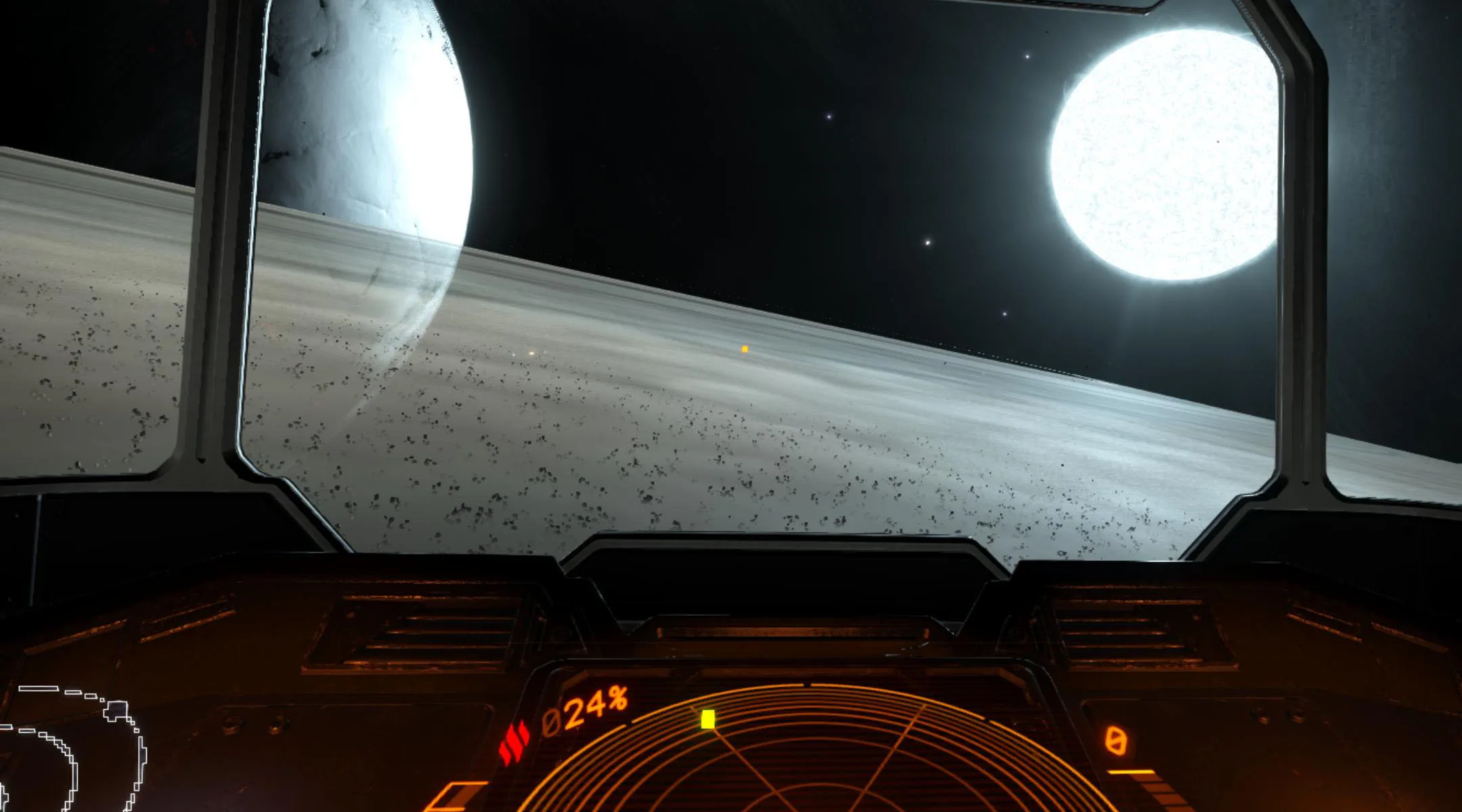
A player will probably spend a lot of time piloting his space cruiser while completing a multitude of tasks as well as visiting space stations and orbiting a multitude of different planets (~400 billion). Elite Dangerous is also co-op and multiplayer with a very dedicated following of players.
We picked the Ultra Preset, and this time, we set the Field of View to its maximum. Here are the frametimes.
 Here are the details are reported by FCAT-VR:
Here are the details are reported by FCAT-VR:
The RX 6900 XT delivered 163.51 unconstrained FPS with no Warp Misses and 0 dropped frames, and none of its frames had to be synthesized.
The RTX 3090 delivered 168.46 unconstrained FPS with 1 Warp Miss, 1 dropped, and 1 synthetic frames. The experience playing Elite Dangerous at Ultra settings is not perceptibly different on either video card.
Let’s continue with Fallout 4.
Fallout 4
Fallout 4 uses the Creation Engine, and Bethesda has dropped all support for it so it remains unoptimized although there are mods that may be helpful. It’s difficult to use the Index controllers with it, so we use the Vive wands instead for this game. We benchmark at its highest settings and with TAA. All Fade settings are set to their maximums.
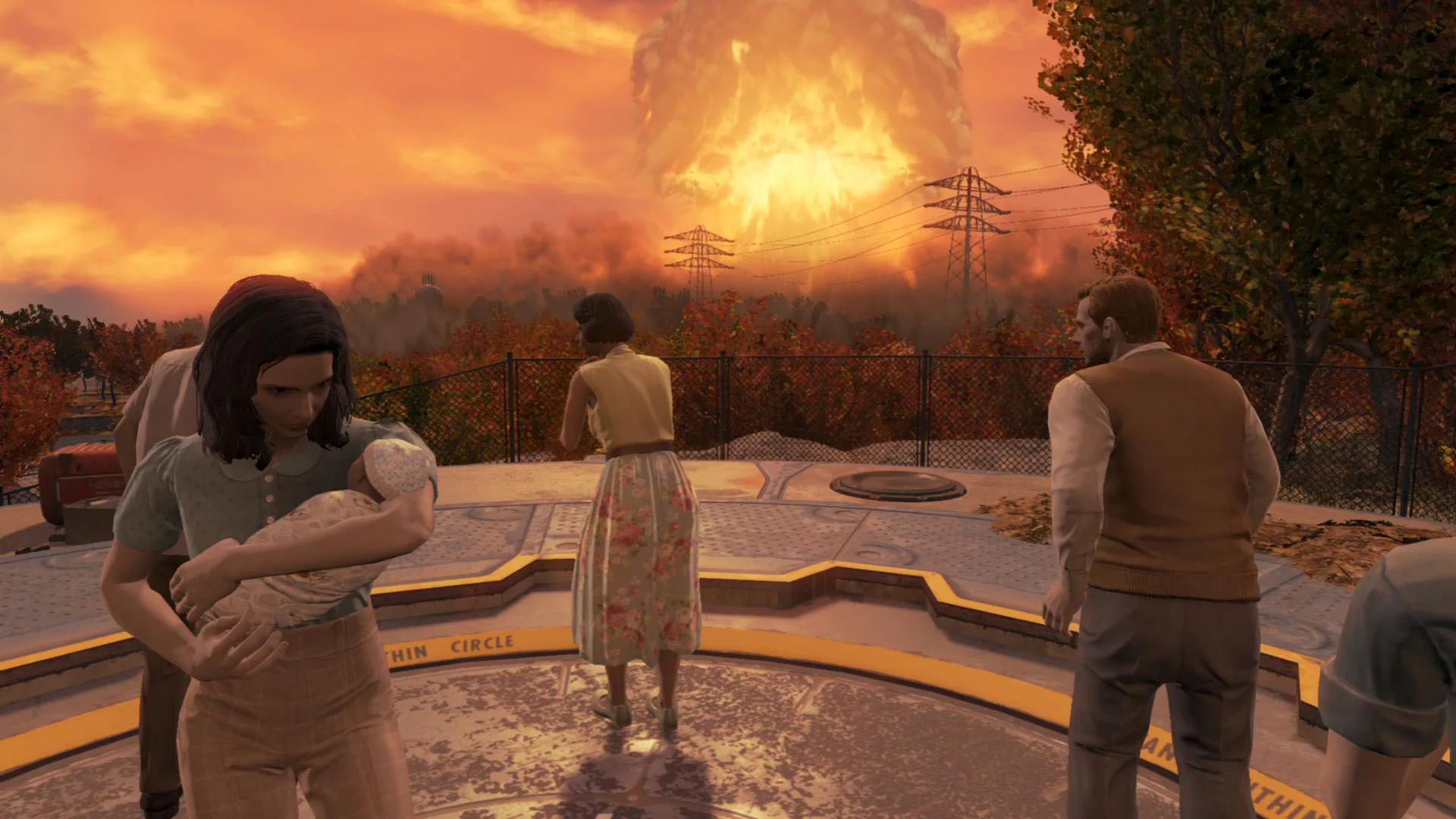 Fallout 4 had some issues on both cards as it is still an unoptimized mess abandoned by its publisher – but it is playable and an amazing full-game experience.
Fallout 4 had some issues on both cards as it is still an unoptimized mess abandoned by its publisher – but it is playable and an amazing full-game experience.
Here is the frametime plot for Fallout 4.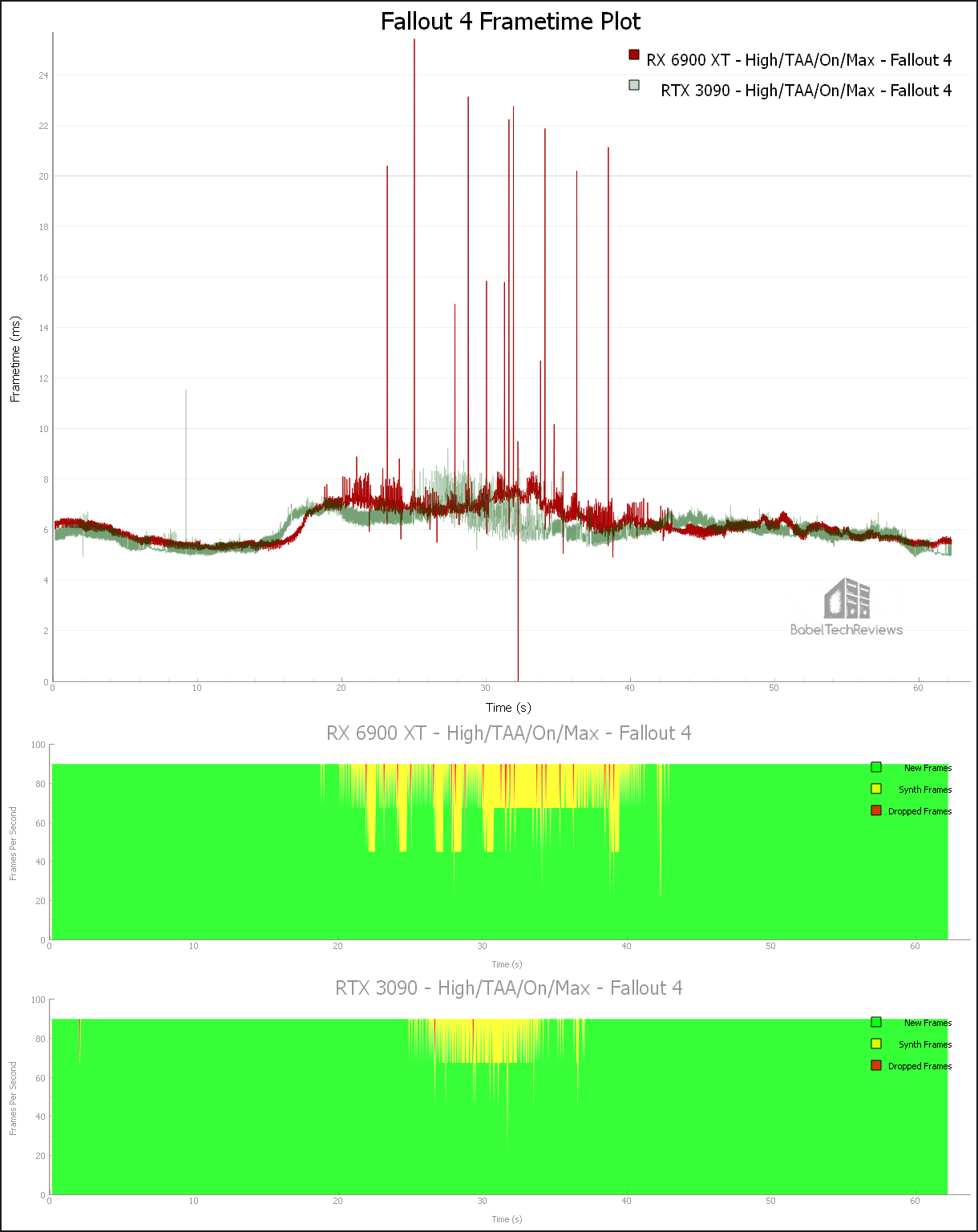
Here are the details are reported by FCAT-VR: The Red Devil RX 6900 XT delivered 161.28 unconstrained FPS with 25 Warp Misses and 25 dropped frames, and 8% (445) of its frames had to be synthesized.
The Red Devil RX 6900 XT delivered 161.28 unconstrained FPS with 25 Warp Misses and 25 dropped frames, and 8% (445) of its frames had to be synthesized.
The RTX 3080 delivered 167.24 unconstrained FPS with 3 Warp Misses and 3 dropped frames, and it required 158 (3%) synthetic frames.
Dropped frames are more noticeable than synthetic frames and the RTX 3090 delivers a smoother VR experience than the RX 6900 XT for Fallout 4 although it also suffered several warp misses.
Next we look at Half Life: Alyx:
Half Life: Alyx
Half Life: Alyx uses an adaptive/dynamic scaling algorithm which uses a card’s performance headroom to subsample in demanding scenes and to supersample in less demanding scenes. We used its console commands to lock the SteamVR resolution to 200% so that it did not supersample or subsample.
Here is the frametime plot for Half Life Alyx.
Here are the details as reported by FCAT-VR.
The RX 6900 XT delivered 149.82 unconstrained FPS with no dropped frames nor any warp misses but with 15 synthetic frames.
The RTX 3090 delivered 184.07 unconstrained FPS and with 3 dropped and 3 synthetic frames with 3 warp misses. Half Life Alyx isn’t particularly demanding until the Super Resolution increased to beyond 150% in SteamVR settings, and the game will subsample or supersample as needed.
Next, we look at Hellblade: Senua’s Sacrifice.
Hellblade: Senua’s Sacrifice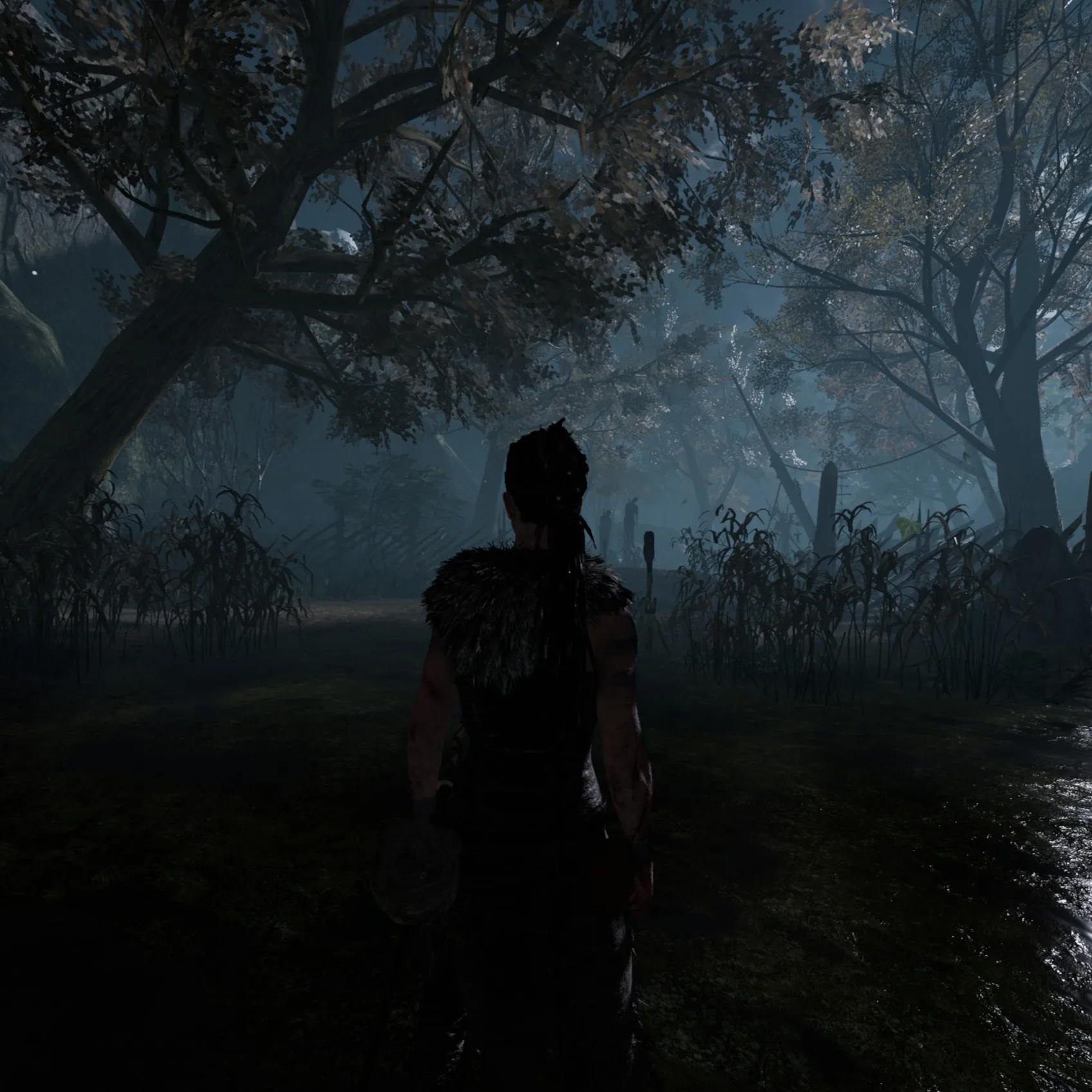
Hellblade: Senua’s Sacrifice is a visually impressive game using the Unreal 4 engine. It is a dark and disturbing game that is far more intense in VR than the pancake version. We benchmark at its very highest settings and with TAA, and we also increased the resolution to 170% in-game.
Here is the frametime plot for Hellblade: Senua’s Sacrifice.
Here are the FCAT-VR details.
 The RX 6900 XT delivered 108.49 unconstrained FPS with no dropped frames or Warp Misses, but with 8 synthetic frames.
The RX 6900 XT delivered 108.49 unconstrained FPS with no dropped frames or Warp Misses, but with 8 synthetic frames.
The RTX 3090 delivered 132.01 unconstrained FPS with 1 dropped and 10 synthetic frames. It also suffered a Warp miss.
Hellblade only becomes demanding after the in-game resolution is set to above 150% and it looks great .
Next we look at Into the Radius.
Into the Radius
Into the Radius is a hardcore single player stealth survival adventure/exploration game, and it pays homage to the S.T.A.L.K.E.R. series by being set in the dangerous large open world of the Pechorsk Exclusion Zone.
 Into the Radius has good visuals using Unreal Engine 4 that really add to its spooky and intense atmosphere, and its performance demands on the video card are also higher since its a huge open world game with a decent draw distance.
Into the Radius has good visuals using Unreal Engine 4 that really add to its spooky and intense atmosphere, and its performance demands on the video card are also higher since its a huge open world game with a decent draw distance.
There are no user options for changing individual graphics settings other than High, Medium, and Low presets. There is also a slider to drop or subsample the resolution down to 65%, or to increase the resolution to 110%. We benchmarked our two cards at High Quality and with 110% resolution.
Here is the frametime plot for Into the Radius.
Into the Radius becomes demanding after the resolution is set above 100% and the Red Devil RX 6900 XT delivered 139.1 unconstrained FPS with no dropped frames or no warp misses, but 8 synthetic frames needed to be generated.
The RTX 3090 delivered 175.62 unconstrained FPS with 2 dropped and 4 synthetic frames. However, it suffered 2 Warp misses. Both video cards delivered a similar experience although the RTX 3090 has about 25% more performance headroom for increasing the Super Resolution.
Next, we will check out another demanding VR game, No Man’s Sky.
No Man’s Sky
No Man’s Sky is an action-adventure survival single and multiplayer game that emphasizes survival, exploration, fighting, and trading. It is set in a procedurally generated deterministic open universe, which includes over 18 quintillion unique planets using its own custom game engine.
The player takes the role of a Traveller in an uncharted universe by starting on a random planet with a damaged spacecraft equipped with only a jetpack-equipped exosuit and a versatile multi-tool that can also be used for defense. The player is encouraged to find resources to repair his spacecraft allowing for intra- and inter-planetary travel, and to interact with other players.
Here is the No Man’s Sky Frametime plot. We set the settings to High which is above Enhanced but below Ultra, and we also set the anisotropic filtering to 16X and upgraded to FXAA+TAA.
 Here are the FCAT-VR details of our comparative runs.
Here are the FCAT-VR details of our comparative runs.
The RX 6900 XT delivered 116.19 unconstrained FPS with no warp misses or dropped frames, and 849 of its frames (13%) had to be synthesized.
The RTX 3090 delivered 135.09 unconstrained FPS with 1 dropped frame and 1 Warp miss, and it required 13 synthetic frames.
The RTX 3090 doesn’t need nearly as many synthetic frames, and it also edges out the RX 6800 XT although we do not recommend using Ultra settings for either card.
Next, we will check out another VR game, Obduction.
Obduction
Obduction is considered to be the spiritual successor to Myst and Riven. It is an adventure game developed by Cyan Worlds using the Unreal 4 engine and it has very good visuals. There is an emphasis on puzzle solving which get more and more difficult as a player progresses.
Here is Obduction’s frametime plot.
Here are the details. The Red Devil RX 6900 XT delivered 126.2 unconstrained FPS with no dropped frames or warp misses, but with 20 synthetic frames.
The Red Devil RX 6900 XT delivered 126.2 unconstrained FPS with no dropped frames or warp misses, but with 20 synthetic frames.
The RTX 309 0 delivered 153.22 unconstrained FPS with no dropped frames or Warp misses, but with 4 synthetic frames. The experience playing Obduction is similar on both cards although the GeForce has about 20% more performanceheadroom.
Next we will check out another demanding VR game, Project CARS 2 that we like better than its successor.
Project CARS 2
There is a real sense immersion that comes from playing Project CARS 2 in VR using a wheel and pedals. It uses its in-house Madness engine, and the physics implementation is outstanding. We are disappointed with Project CARS 3, and will continue to use the older game instead for VR benching.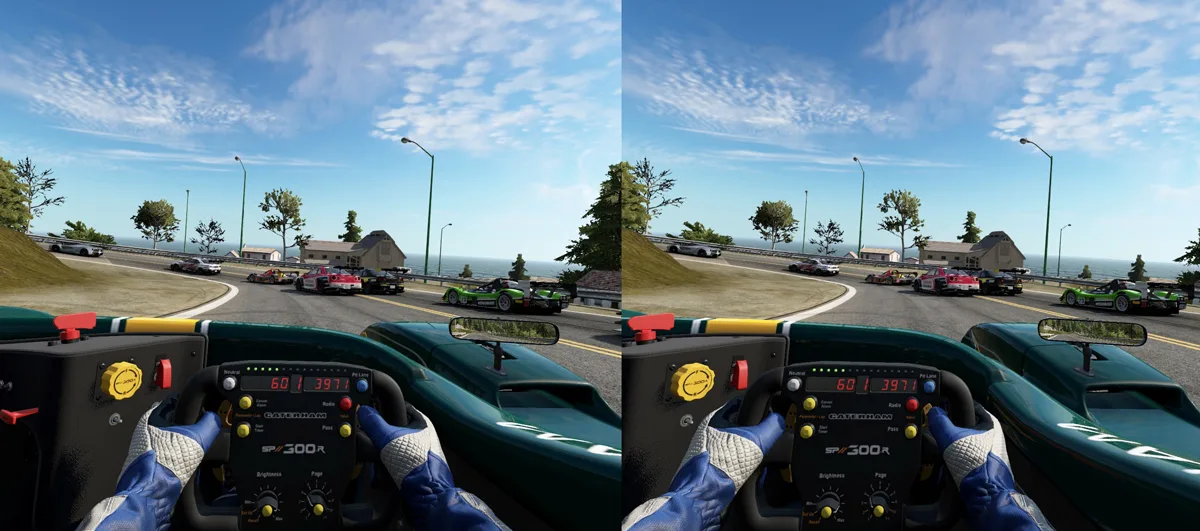
Project CARS 2 offers many performance options and settings and we prefer playing with SMAA Ultra.
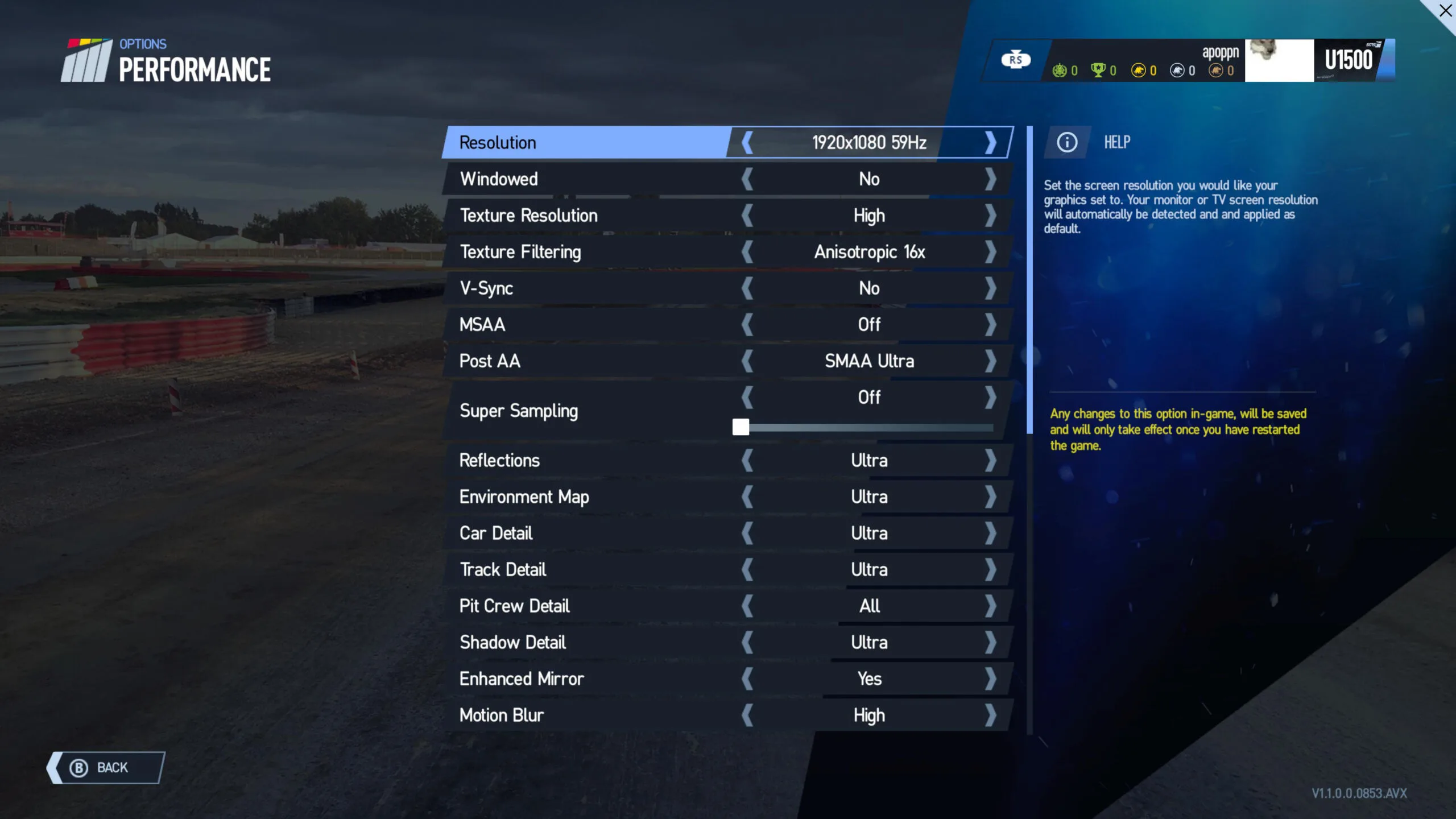
We used maximum settings including for Motion Blur although it looks best to us with on Low or Medium. For lesser cards, we would also recommend lowering grass and reflections to maximize framerate delivery as motion smoothing or reprojection tends to cause visible artifacting.
The Red Devil RX 6900 XT delivered 136.22 unconstrained FPS, with 24 dropped frames, 24 warp misses and 347 of its frames (4%) had to be synthesized.
The RTX 3080 delivered 136.06 unconstrained FPS with 2 dropped frames, 2 warp misses, but it only required 2 synthetic frames. The performance headroom playing Project CARS 2 on our maximum settings is similar for both cards although the RX 6900 XT requires more frames to be synthesized and it had many more Warp misses.
Let’s benchmark Skyrim VR.
Skyrim VR
Skyrim VR is an older game that is no longer supported by Bethesda, but fortunately the modding community has adopted it. It is not as demanding as many of the newer VR ports so its performance is still very good on maxed-out settings using its Creation engine.
We benchmarked Skyrim VR using its highest settings, and we also increased the resolution to its in-game maximum.
Here are the frametime results.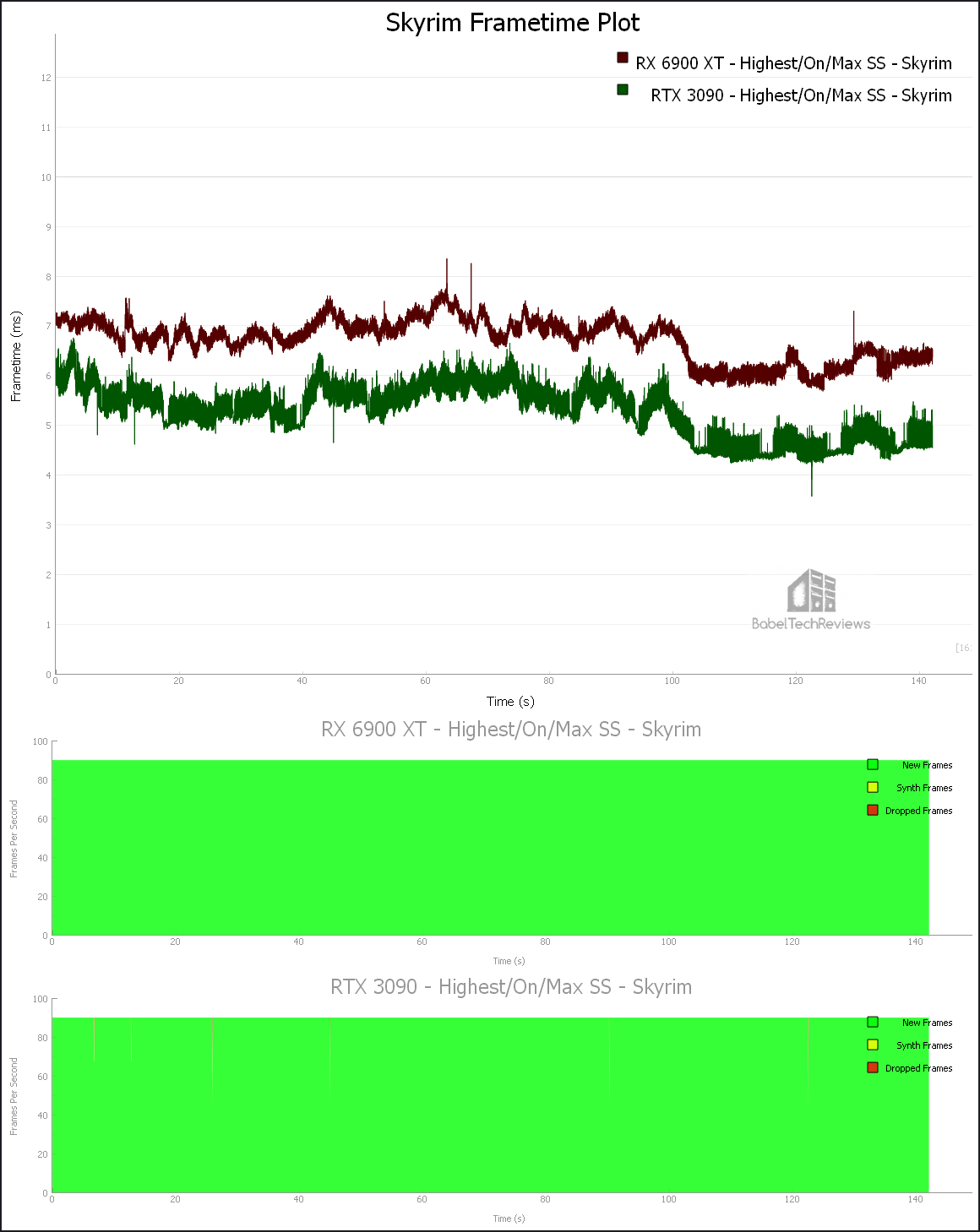
Here are the details of our comparative runs as reported by FCAT-VR.
The RX 6900 XT delivered 148.84 unconstrained FPS with no dropped frames, no synthetic frames, and no warp misses.
The RTX 3090 delivered 190.7 unconstrained FPS with 7 dropped frames, 6 synthetic frames, and 7 warp misses for slightly imperfect playing experience. Of course, many players would prefer adding more mods to the game rather than increasing the resolution, and the RTX 3090 gives approximately 30% performance headroom more than the RX 6800 XT.
Let’s check out Subnautica next.
Subnautica
Subnautica uses the Unity engine. As the sole survivor of a crash landing, the player ventures into the depths of a visually impressive alien underwater world. Here you can explore, craft equipment and build bases, pilot underwater craft, and solve mysteries all while attempting to survive a hostile environment. It is an unoptimized mess, but the VR experience is well worth it.
We benchmarked Subnautica using its highest settings plus TAA, but we left its resolution at 100%, and here are the frametime results.
The RX 6900 XT delivered 120.6 unconstrained FPS with 28 Warp Misses and 28 dropped frames, and it required 1958 synthetic frames (31%).
The RTX 3090 delivered 117.5 unconstrained FPS with 2 dropped frames, 2 warp misses, and 29% (1838) of its frames had to be synthesized.
The experience playing Subnautica using its highest settings is not ideal as it doesn’t appear to be very well optimized and there are obvious stutters at times which may also be driver related. However, the experience using the RX 3090 is smoother than the RX 6900 XT.
Next up, The Vanishing of Ethan Carter.
The Vanishing of Ethan Carter
The Vanishing of Ethan Carter is an older game which is built on the Unreal 4 engine and it still boasts amazing visuals although it is not demanding. Although it is considered by some to be a walking simulator, it is also an excellent detective game with great puzzles. But be aware that its style of locomotion tends to make some of its players VR sick.
There are just a few in-game graphics options available, so we set 100% resolution in-game with TAA and then set SteamVR’s resolution to 200%.
The RX 6900 XT delivered 289.82 unconstrained FPS with no dropped frames, no warp misses and 1 synthetic frame.
The RTX 3090 delivered 287.01 unconstrained FPS with 2 dropped frames, 2 warp misses, and 2 synthetic frames.
Although it is a beautiful game visually, The Vanishing of Ethan Carter isn’t particularly demanding even after the Super Resolution is increased to 200% using SteamVR. The experience playing on both cards is similar.
Last up, The Walking Dead: Saints & Sinners.
The Walking Dead: Saints & Sinners
The Walking Dead: Saints & Sinner is the last of BTR’s 15 VR game benching suite. It is a first person survival horror adventure RPG with a strong emphasis on crafting. Its visuals using the Unreal 4 engine are outstanding and it makes good use of physics for interactions.
We benchmarked Saints and Sinners using its highest settings, but this time we increased the Pixel Density to 150% in game. 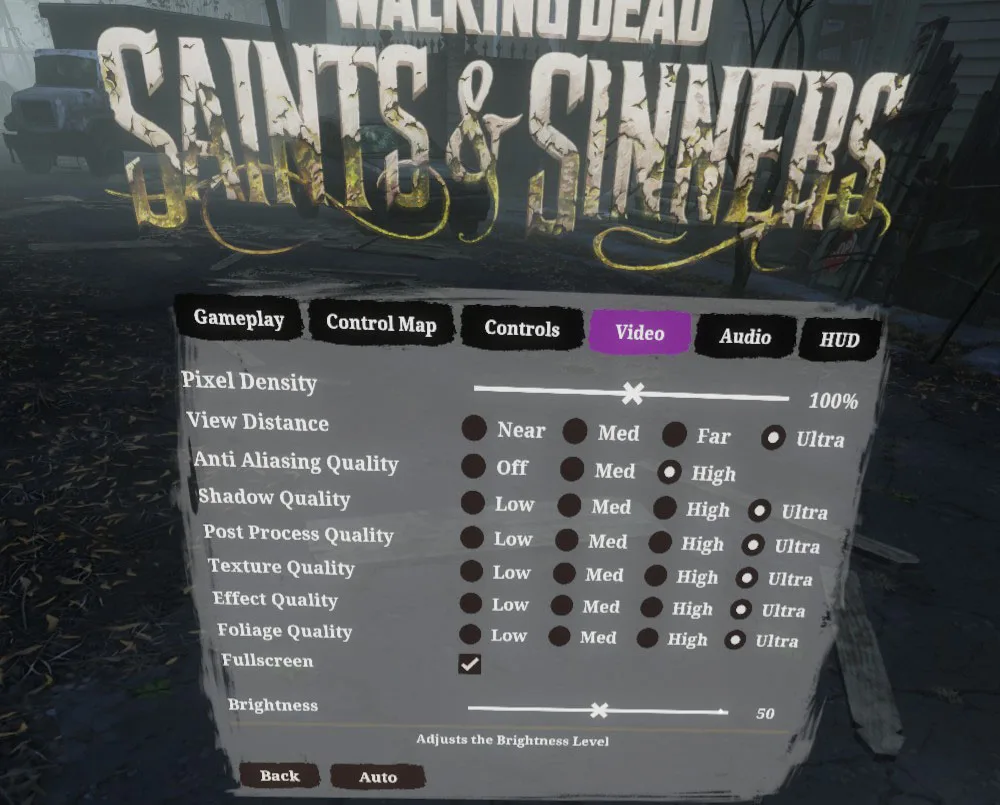 Here is the frametime chart.
Here is the frametime chart.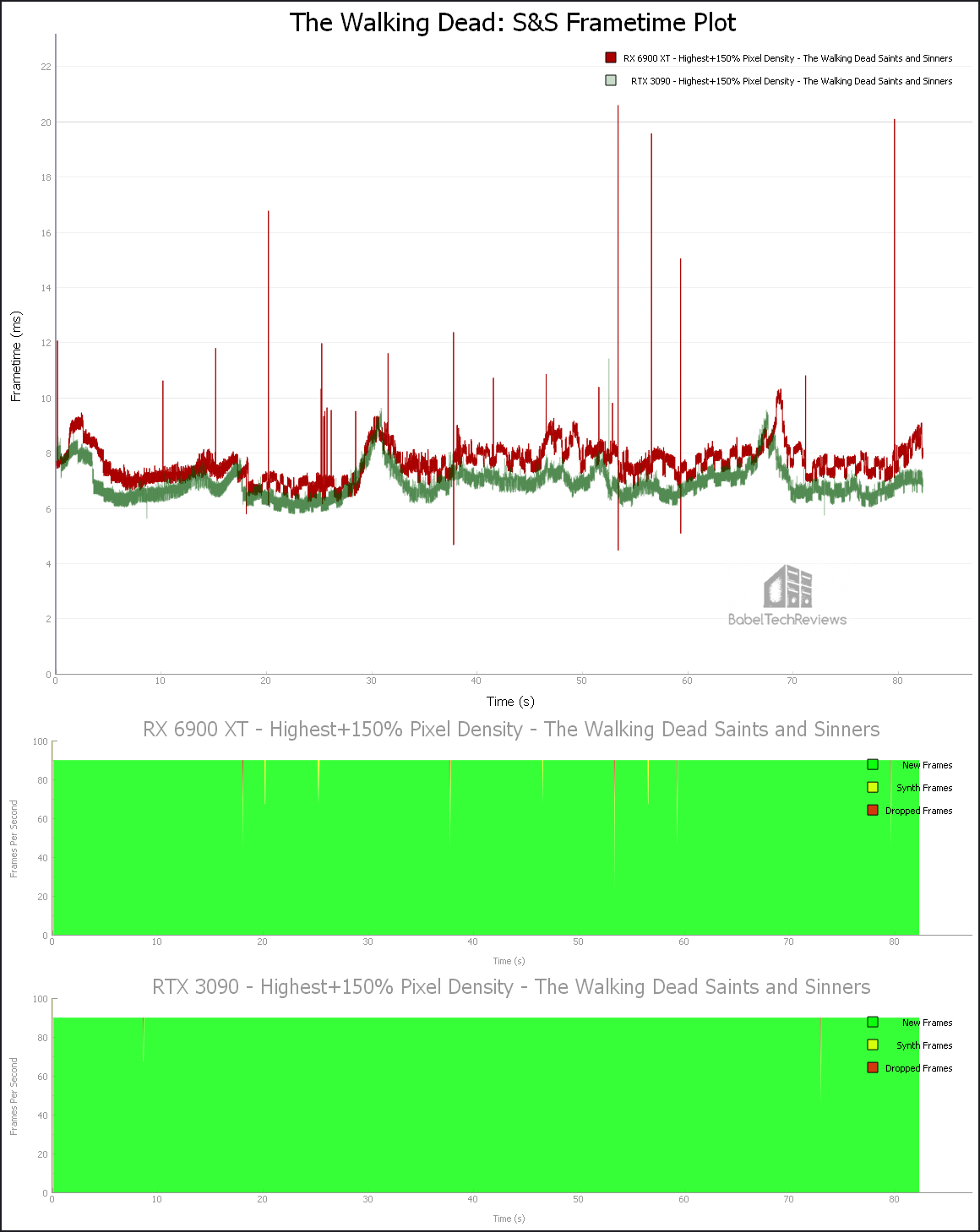
Here are the details as reported by FCAT-VR. The Red Devil RX 6900 XT delivered 130.43 unconstrained FPS with 5 dropped frames and 5 warp misses, and 15 of its frames had to be synthesized.
The Red Devil RX 6900 XT delivered 130.43 unconstrained FPS with 5 dropped frames and 5 warp misses, and 15 of its frames had to be synthesized.
The RTX 3090 delivered 145.21 unconstrained FPS with 2 dropped frames and 2 Warp Misses, and it required 2 synthetic frames.
The experience playing The Walking Dead: Saints & Sinners using the in-game maximum settings and highest Pixel Density is similar between both video cards although the RTX 3090 has about a 20% performance headroom over the Radeon.
Let’s look at our overall Unconstrained Framerates Chart.
Unconstrained Framerates & Synthetic Benches
Synthetic benchmarks are only useful for ranking cards. They don’t predict how any game will actually play in VR on any particular video card.
The following chart summarizes the overall Unconstrained Framerates (the performance headroom) of our two cards using fifteen test games and four synthetic benches: Superposition, VRMark’s Cyan and Blue Rooms, and the OpenVR benchmark. Higher is better. In addition, AMD’s other Big Navi 2 cards are compared with the rest of NVIDIA’s Ampere line-up.
The RX 3090 FE delivers higher unconstrained frames in 13 out of 15 games over the Red Devil RX 6900 XT in this one important performance metric. However, the RX 6900 XT is a significantly stronger VR card compared with the RTX 3080.
We don’t give percentages of change or percentages of increase between competing cards since unconstrained framerates are just one metric of performance headroom that is useless without the accompanying frametime charts.
Let’s check out our conclusion.
Conclusion
It is great to see AMD delivering a card that is performance competitive with the RX 3090. However, the RX 6900 XT only delivers higher unconstrained framerates in 2 of the 15 VR games we benchmarked. In addition, several of the FCAT VR frametime plots indicate the RTX 3090 delivers a smoother experience. However, the RX 6900 XT distinguishes itself from the RX 6800 XT as a faster card for playing at our demanding VR settings better than it does with pancake games and the Red Devil is a fine RX 6900 XT indeed.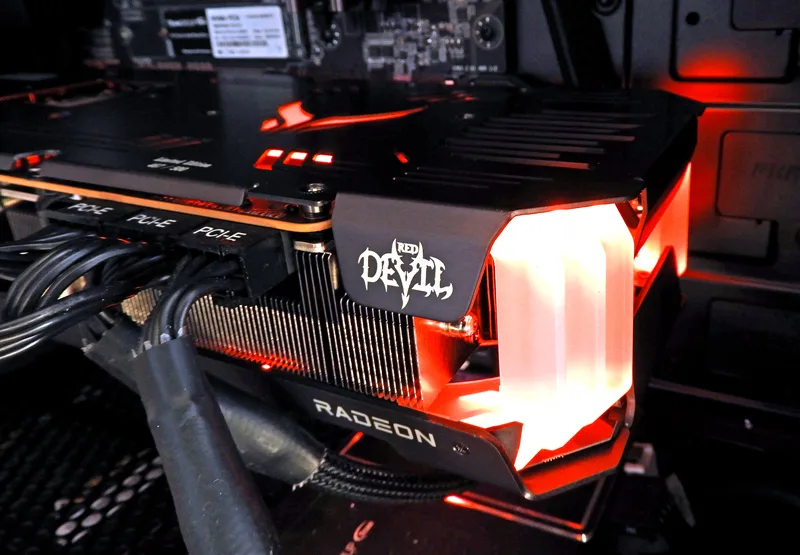
The final part 3 of our Red Devil RX 6900 XT review will compare its overclocked performance versus the RTX 3090 FE and will be posted within 2 days. We are going to set up our HOTAS and rudders and work on a benchmark for Star Wars: Squadrons VR over the weekend.
Next week, we are going to return to VR benching by comparing a Reverb G1 with the Vive Pro to see how a higher resolution HMD places extra demands on video card performance.
Stay tuned to BTR!
Happy VR Gaming!

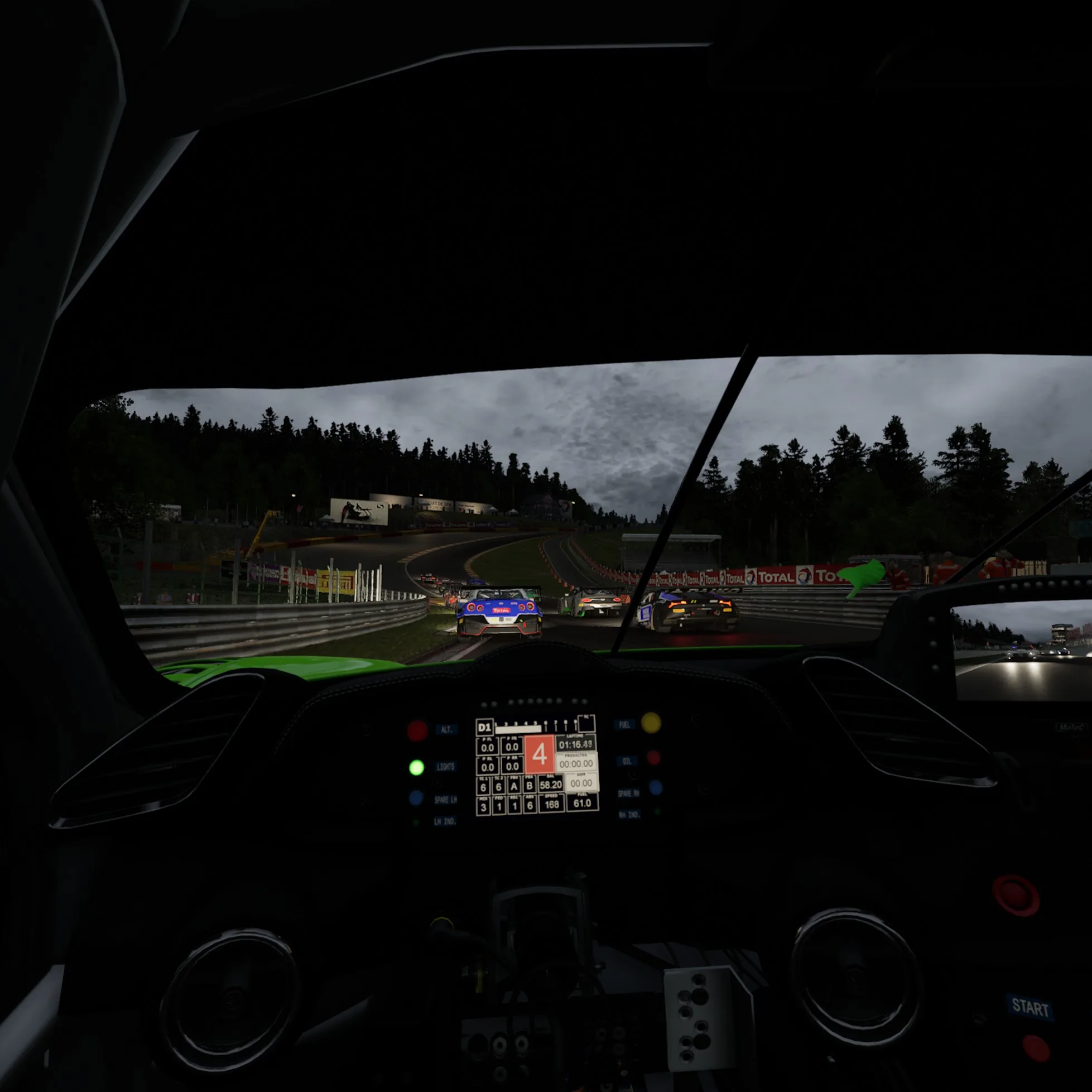

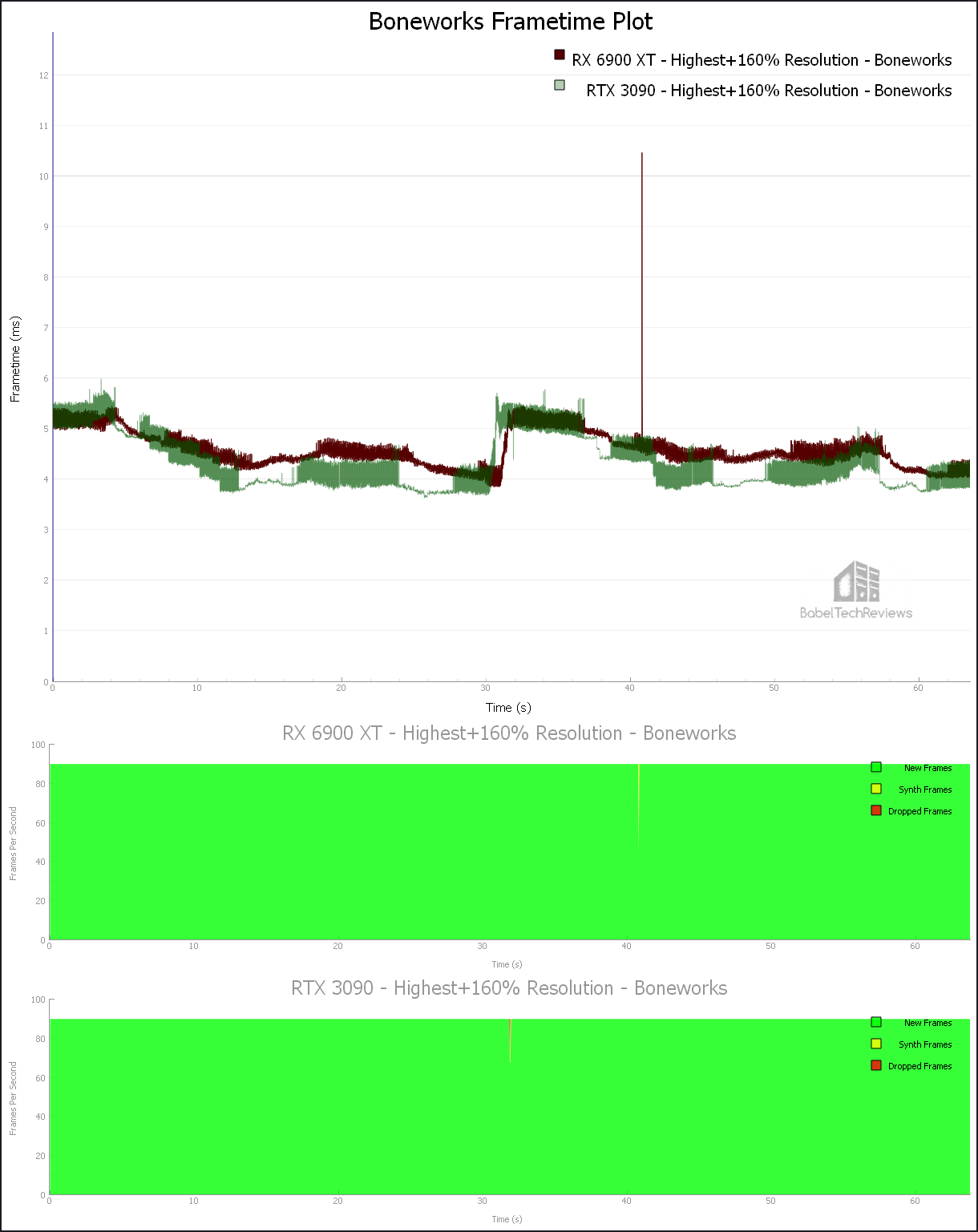








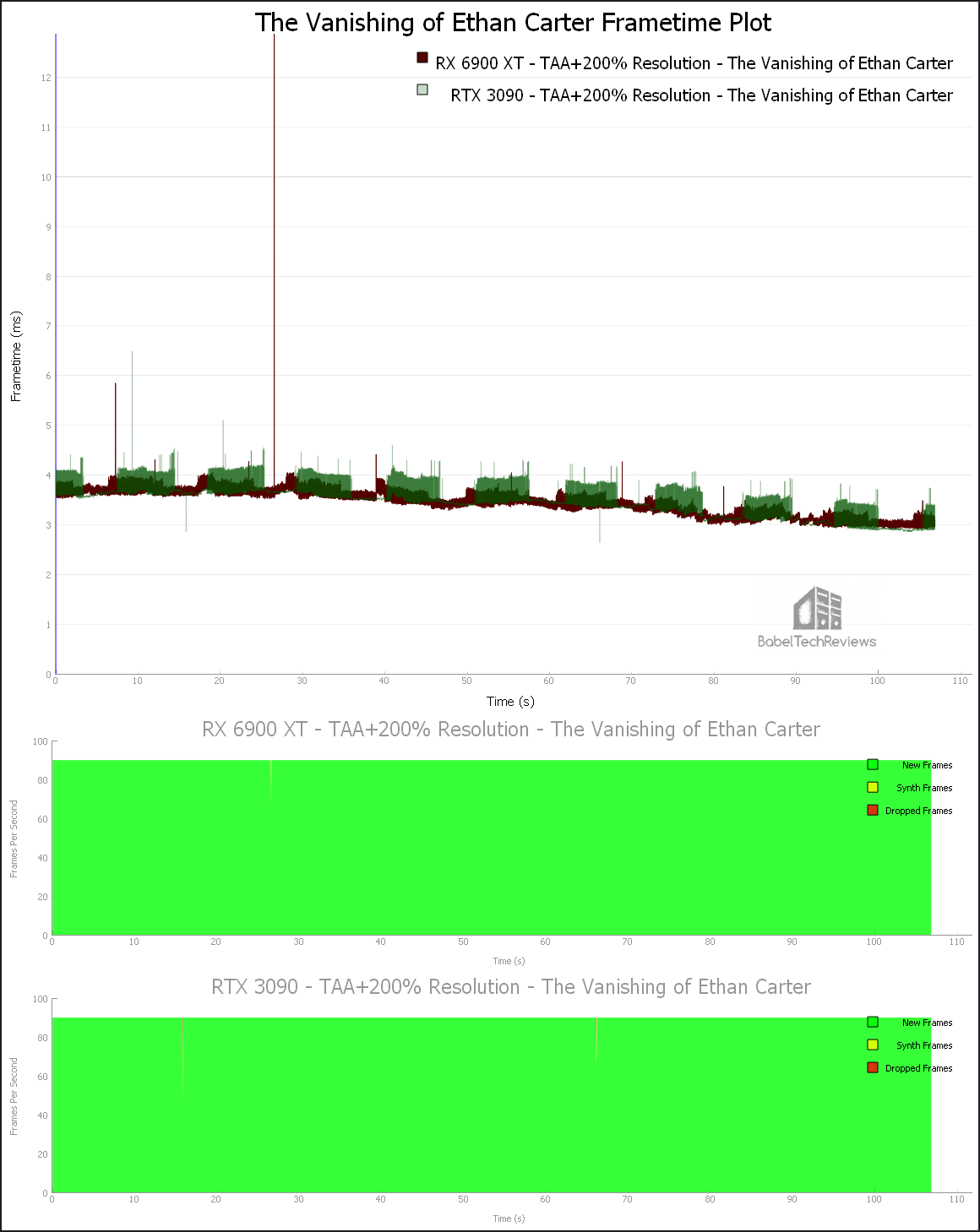

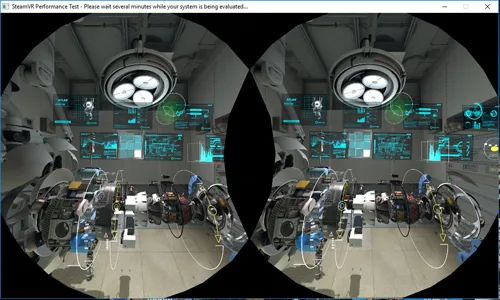

Comments are closed.